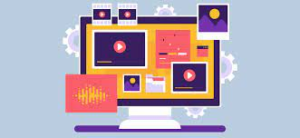
Animation is a powerful tool that can make your website more interesting and engaging. However, it’s important to be discerning and only use animation that adds value to the user experience. If done poorly, it can be distracting and even annoying.
The days of 3D gifs and flash animation are long gone—but the power of animation is alive and well on the web. Web designers can use pure CSS animation to create simple transitions, effects, and interactions that are both functional and beautiful. Animation can help guide users through a page, signalling changes in state or providing instructions.

Some types of animation are more eye-catching than others, but the most effective use of animation is often subtle and unobtrusive. Consider the benefits of html5 banners for your site. To find out more about html5 banners, visit The Bannermen.
Web designers are vying for consumers’ attention, and the best way to do that is with movement. Whether it’s a scrolling image gallery, parallax, or a smooth transition for text or buttons, web animation helps grab and retain user attention. It’s a trend that began with GIFs and was later introduced to websites via the now-deprecated Flash platform.

This technology fuelled website animation for over a decade, and influenced the design of everything from web pages to online games to full-motion video. One of the most popular uses for web animation is to provide users with positive or negative feedback. Web animations can also be used to present complex processes or instructions to users in an engaging manner.